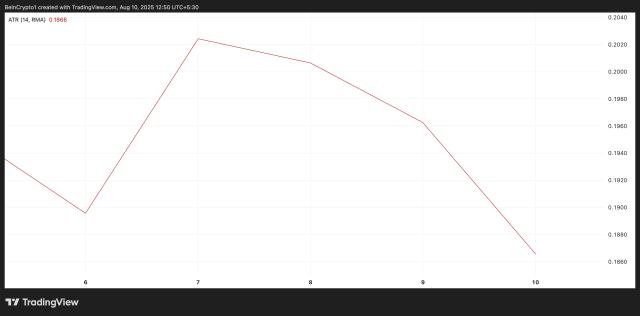Cover: Photo by Debby Hudson on Unsplash
This track-level research report, written by Web3Caff Research researcher @HendrixCyborg, focuses on the institutional evolution and global competitive path of stable on-chain payment tools, and conducts four core analyses:
① With the GENIUS Act as an example, the United States has built a compliance framework based on treasury bond anchoring, promoted the inclusion of stablecoins in the US dollar's external financial system, and attempted to strengthen its payment dominance with "on-chain tools";
② The European Union, Hong Kong, China, and other places are accelerating the development of local regulatory paths, developing differentiated institutional layouts around "quota limits," "multi-anchor mechanisms," and "regulatory sandboxes," and a global institutional game pattern is beginning to emerge;
③ Starting from the underlying payment mechanism, the research report deeply compares "stablecoin accounts vs. bank accounts", pointing out that stablecoins are closer to "asset intermediary networks" and have the potential to reshape the clearing and settlement structure;
④ The research report innovatively introduces the Bertrand model, constructs a "convenience yield" competition model, and analyzes how the Hong Kong dollar stablecoin can challenge the unipolar pattern with its cost advantage.We have also added key visualization content such as key structure diagrams, three types of models of the Federal Reserve, market capitalization comparison of mainstream stable assets, Visa payment network map, Circle and Tether reserve structure, etc.
Once heralded as a revolution disrupting traditional finance, cryptocurrency ultimately escaped violent confrontation. Instead, it became deeply intertwined with regulatory systems and political consensus. From challenging traditions to seeking permission, from the ideal of decentralization to the reality of centralized regulation, the absurdity and contradictions of this "revolution" lie at the heart of this article. This article explores the issues at hand, so please read quickly.
On July 30th, Eastern Time, the White House officially released its "Digital Asset Policy Report." This article provides a quick overview of its five key conclusions and two remaining questions, and offers insights into regulatory and business implications and next steps. The report first clarifies the regulatory boundaries for stablecoins, moving from "whether they can be issued" to "how they can operate legally as payment instruments." This article explores these points for a quick read.
On July 30, 2015, as block height reached its preset value of 1,028,201, a decentralized world computer quietly launched in a small Berlin office. Ten years later, Ethereum has grown from an experimental project into a cornerstone supporting thousands of applications and leading crypto innovation. This article examines ten key moments in Ethereum's history.
Hong Kong's stablecoin regulatory framework, officially implemented on August 1, 2025, marks a key step forward in global virtual asset regulation. While the framework aims to foster a robust and sustainable digital asset ecosystem, it also introduces unprecedentedly stringent regulatory requirements. Seven Research will explain this in this article. Read on for a quick overview.
Ever since President Donald Trump requested the establishment of the Digital Asset Markets Task Force in January of this year and requested a report outlining recommendations for a regulatory framework for digital assets, the report has been highly anticipated. Some crypto professionals have even claimed that the report will become a "regulatory bible," or guide, for the industry. Now that this "regulatory bible" has finally been released, this article provides a quick overview and a quick read.
Capital formation is a core part of the SEC's mission, but for too long, the SEC has ignored the market's need for choice and has suppressed crypto-based financing models. This has led to a gradual shift away from asset issuance in the crypto market, depriving American investors of the opportunity to participate in productive economic activities through this technology. Bibi News will explain this in this article. Read it now.
In early July 2025, the law firm Pomerantz filed a class action lawsuit against Strategy in the U.S. District Court for the Eastern District of Virginia on behalf of all individuals and entities that purchased or otherwise acquired Strategy securities between April 30, 2024, and April 4, 2025. This article provides an in-depth look at the case.
The Hong Kong Monetary Authority recently released a series of supporting regulatory documents for the Stablecoin Ordinance. These documents not only provide a clear application path and compliance standards for the stablecoin market, but also demonstrate Hong Kong's commitment to strengthening risk prevention and control while leaving policy space for the innovative development of stablecoins. This article summarizes the key points of the relevant stablecoin guidance policies and provides an in-depth explanation of the regulatory requirements and practical approaches.
On July 31st, the White House Presidential Task Force on Digital Asset Markets released the 166-page report, "Strengthening U.S. Leadership in Digital Financial Technologies." The report covers an overview of the digital asset ecosystem and the structure of digital markets, with a core objective of ensuring U.S. global leadership in digital assets and blockchain technology. This article discusses this.
In July 2025, Web3 security incidents resulted in a total loss of approximately $147 million. According to the SlowMist Blockchain Hack Archive, 13 hacks occurred, resulting in approximately $140 million in losses, with $42.48 million frozen or returned. The causes of these incidents ranged from contract vulnerabilities, supply chain attacks, and account compromises. This article discusses these issues for you, so take a quick look.
10 news items worth watching this week
- China's Ministry of State Security: A foreign company is using currency issuance to collect global iris information, threatening national security

- Brazil to hold public hearing on August 20 to discuss Bitcoin strategic reserve plan

- MetaMask may launch stablecoin "MetaMask USD" through Stripe

- The US SEC issued a statement: Liquidity pledge activities are not considered securities

- Slash launches USDSL, a USD stablecoin based on Stripe Bridge

- Gemini announces a major event on August 14th

- The White House plans to issue an executive order prohibiting banks from refusing service to customers due to politics or crypto-related issues.

- Grok Imagine is now available on the iOS Grok app

- Somnia establishes a foundation and opens an X account

- MetaMask to roll out UX/UI updates for extensions and apps

- Aave launches V3 developer toolkit

- OpenMind, a company developing intelligent machine infrastructure, raises $20 million in funding led by Pantera Capital

Disclaimer: As a blockchain information platform, the articles published on this site solely reflect the personal views of the authors and guests and do not represent the position of Web3Caff. This content is for informational purposes only and does not constitute any investment advice or offer. Please comply with the relevant laws and regulations of your country or region.
Welcome to join the Web3Caff official community : X (Twitter) account | Web3Caff Research X (Twitter) account | WeChat reader group | WeChat public account







